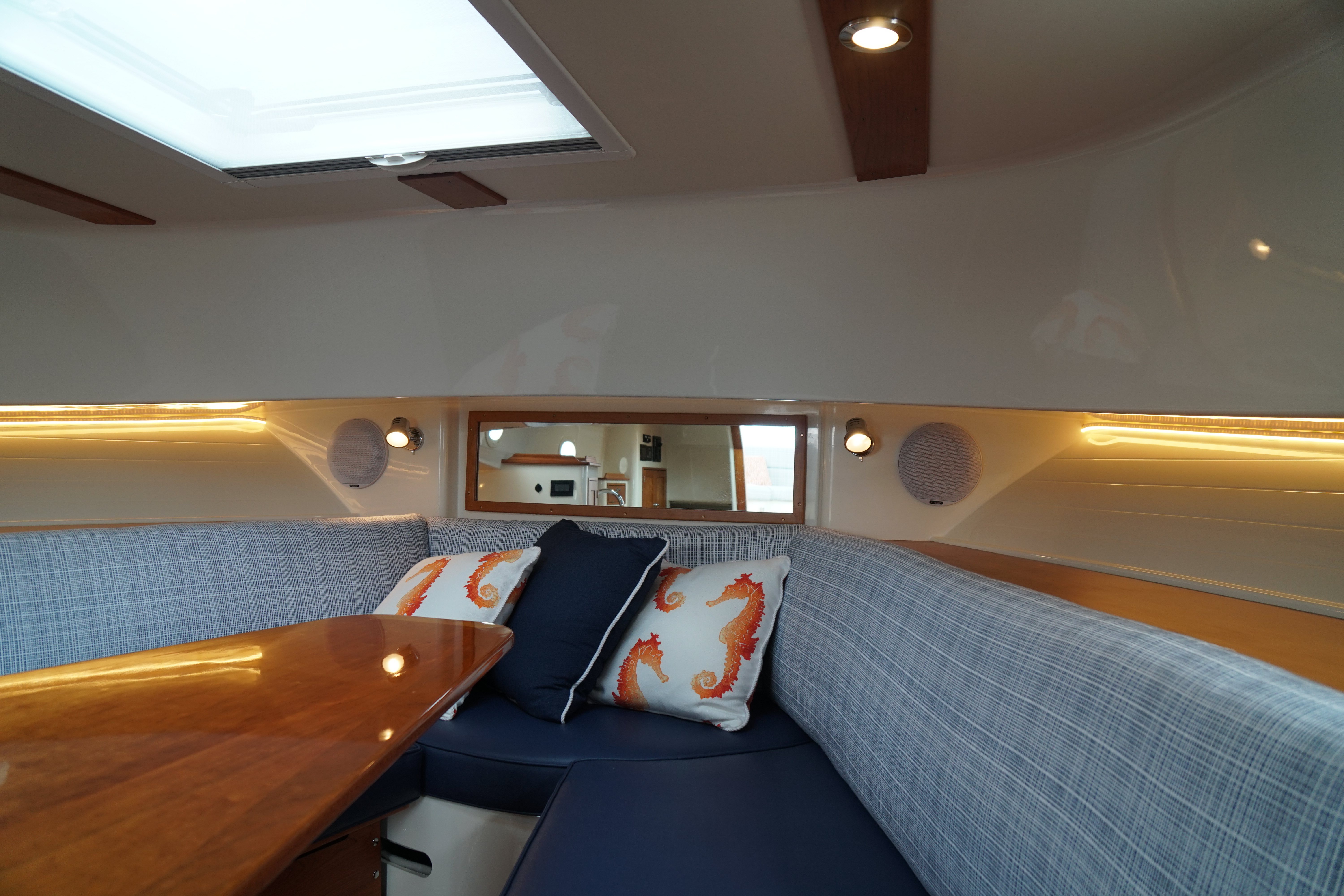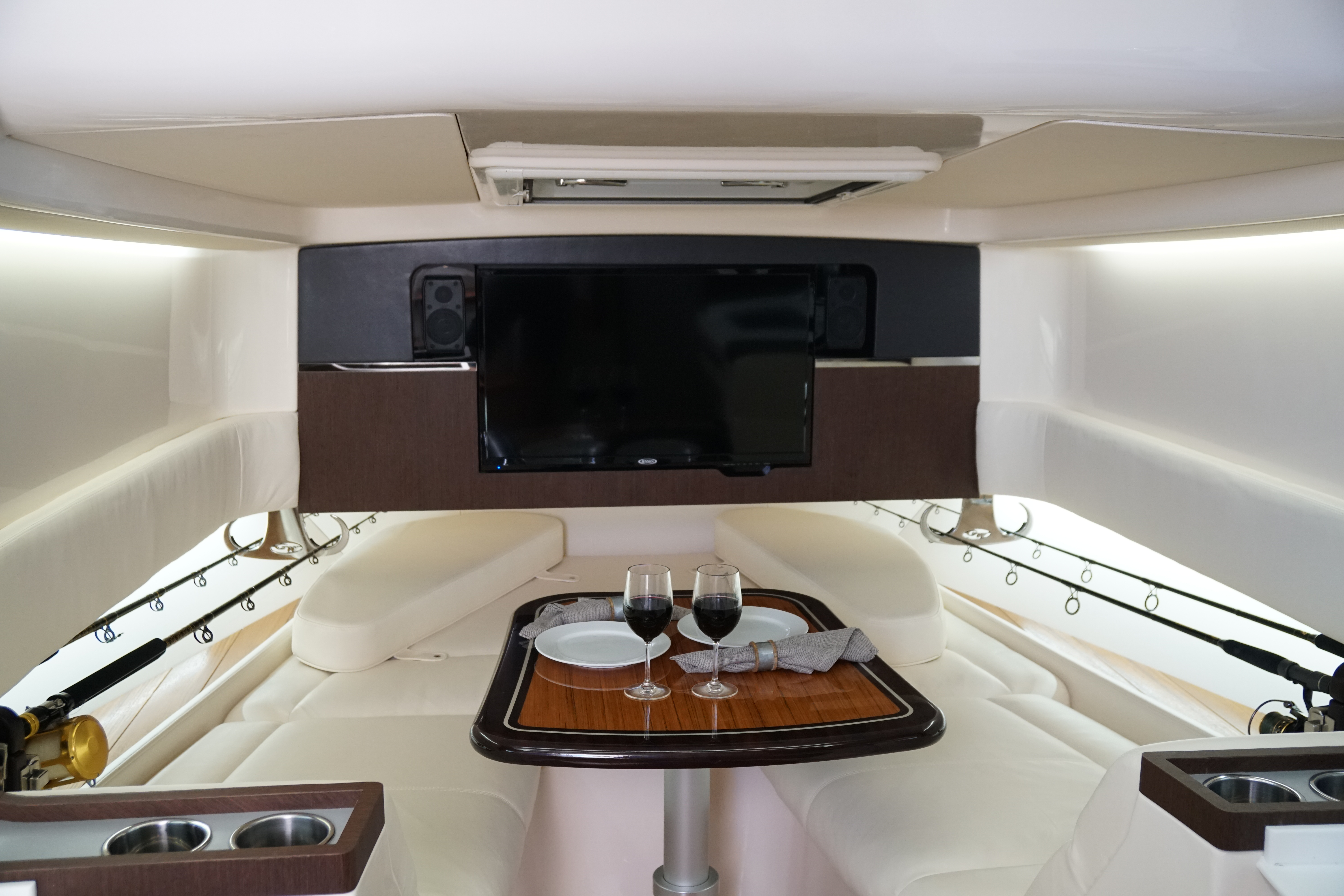The vast majority of boat owners don’t experience any issues with LED lights onboard their boats, but having a circuit of LED lights that hums or flickers can be extremely frustrating, and tracking down the issue can often be challenging. Imtra’s Technical Support Engineer, Van Noorden, walks you through some troubleshooting tips to help expedite the process of finding and resolving the root cause of any issues with your LED lights.
Common Problems With LED Lighting & Questions to Ask
Here are some of the most common problems with LED lighting we hear and some questions to ask yourself when troubleshooting.
Do you have the right dimmer for your lights?
The most common issue we hear is of an LED lighting circuit that begins to flash or flicker when dimmed. Luckily, the most common cause of this issue is simply a matter of incompatibility between the dimmer and the light fixtures or bulbs. Often times a boat owner will replace older halogen bulbs with LED bulbs in the same fixture, which is typically a smooth transition when the lights are controlled with just an on/off switch.
However, when a dimmer is introduced, it’s common for issues to arise. Those issues are caused by the fact that LEDs are dimmed through a different process than halogen lights. Halogen bulbs are most commonly dimmed by controlling the electrical current that flows to the lights, causing the filament inside the bulb to burn with varying intensities.

LEDs, on the other hand, are most commonly dimmed through a process called pulse width modulation (PWM) which essentially turns the diodes on & off extremely rapidly, in such a way that is not perceptible to the human eye, but the frequency with which they turn on & off determines the brightness of the light output.
Therefore, when the dimmer that controls electrical current for halogen dimming is used with LED bulbs or fixtures, the LEDs won’t react in the same way a halogen bulb would, which generally leads to the LEDs flickering or humming. Fixing this issue is very straightforward: source the proper dimming module for the LEDs that you’ve installed. Almost all LED light fixtures and bulbs are designed to work with a specific dimmer, and the manufacturer will be able to point you towards the proper dimmer for your lights.
Is the issue correlated with other equipment onboard?
Another common problem that boaters have with their LED lights is that they work perfectly until something else onboard is turned on, at which point the lights begin to hum or flicker. In this scenario, the cause of the issue is a matter of Electro Magnetic Interference (EMI).
Unlike traditional halogen lights, all LED lights are an active electronic circuit, and all electronic circuits radiate electro-magnetic emissions to some degree. That means there is potential for EMI with any other electronic circuit on the boat. We wrote about how to avoid interference between LEDs and VHF radios in an earlier article, but there are plenty of other electronic circuits onboard that can cause interference with LEDs. Pumps, motors, compressors, inverters, generators, radars, galley appliances and navigational electronics, among others, are all active electronic circuits that can lead to EMI with LED lights.
If you are having issues with your lights when something else is turned on, it’s most likely that a device in the lighting circuit is too close to something in the circuit of the device that’s causing the issue, or that the wires for the two circuits are too close together without using the proper spacing or wiring gauge. Sometimes it’s obvious which two components are too close together, but more often than not, finding the root cause of the issue involves some trial and error of removing or relocating components from each circuit and testing them each individually. We’ll get into more detail on the step-by-step process of testing components below.

Is the issue with the LED lights constant?
If the issue with your LED lighting circuit is a constant, regardless of what other equipment onboard is running at the time, there are a few extra steps that can help narrow down the cause of the problem. The first question is whether the lights have always had an issue, or if it arose recently.
If the issue has been present since the day the lights were installed, it could be something as simple as a loose connection upon installation or a wire that was broken or frayed by a screw or turning a corner that’s too tight. It could also be correlated to another piece of electric equipment onboard that’s constantly running like the examples above.
If it’s an issue that arose seemingly out of the blue after having worked well for some time, the first thing to consider is if any other electric equipment has been installed recently, and if that could possibly cause interference. If that’s the case, the first step would be to shut that equipment down and see if the issue continues.
If it does continue, or if there’s been no recent electrical work done, it’s possible that a component within the system is faulty or has failed. Finding out which component has failed boils down to breaking down the circuit into its parts, and systematically testing each one individually. Trying to identify a faulty component would be the last step if none of the above suggestions solve your issue. Below is an example of steps to take for a lighting circuit consisting of multiple lights wired with a dimmer and switch.
Step 1: disconnect the lights from the dimmer and test with a known good source of power directly feeding the light string. If they all illuminate at full intensity, the lights and wiring are confirmed to be working. If the ones at the end of the wiring run are less intense, flickering, etc. it could point to a wiring or termination issue. Make sure you’re using the proper wiring gauge for voltage drop over the length of run using the ABYC voltage drop table. If any individual light is not behaving as expected, remove it from the circuit and test it on its own.
Step 2: To test the dimmer, confirm wiring in accordance with the specific dimmer instructions and verify that the proper switches are being used for that dimmer. We often see improper wiring on the switching. Disconnect the switch(s) from the dimmer and simulate the actions of the switch using a bent paper clip on the appropriate input terminals. If the dimmer behaves as expected, but wasn’t before, it could point to issues with the switch or switch wiring. If it’s multi-location switching, test each set of switches individually.
Step 3: If the dimmer is powered by an AC/DC converter, disconnect the dimmer from the converter and power it up directly from a known good source of DC power. If it behaves as expected in this state, but not when connected to the AC/DC converter, it’s possible it’s picking up AC noise. A different model AC/DC converter or adding a DC/DC converter with better AC noise/ripple filtering may help.
Final Thoughts
If you’ve asked yourself the following questions and are still stumped about your LED lighting, it’s time to ask an expert! Issues with humming or flickering LED lights can be tricky to track down, so it’s often best to contact an ABYC certified technician to come aboard and assess the situation, or to pick up the phone and call an expert, like the folks here at Imtra.
LED Lights Resources